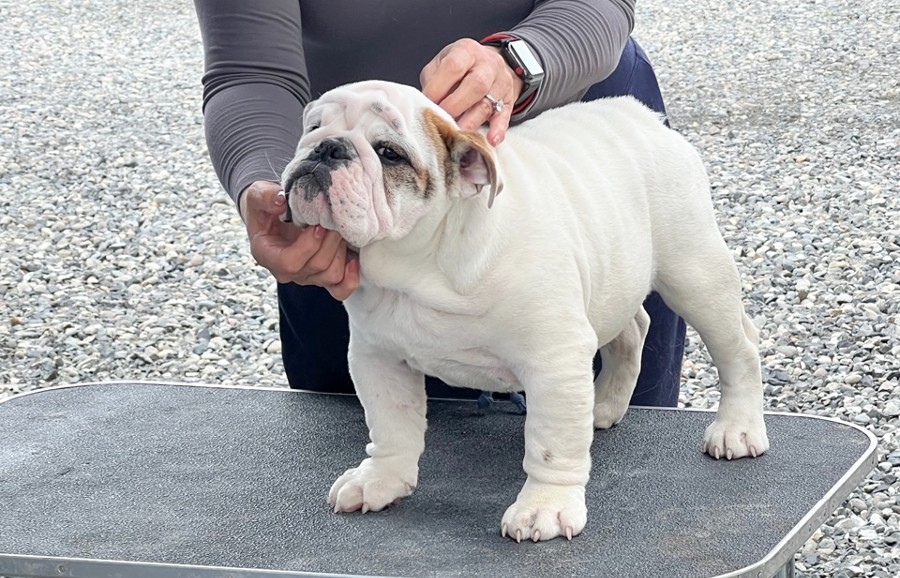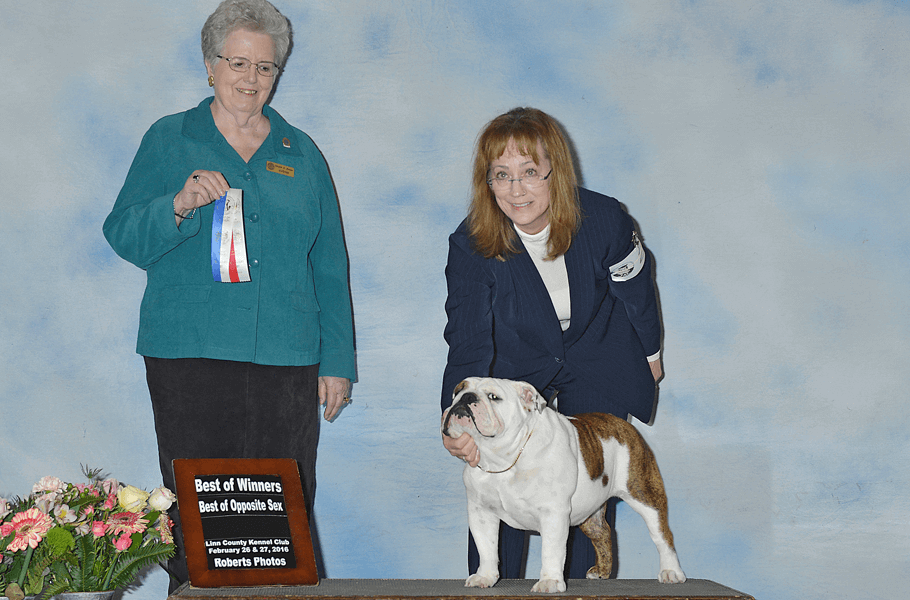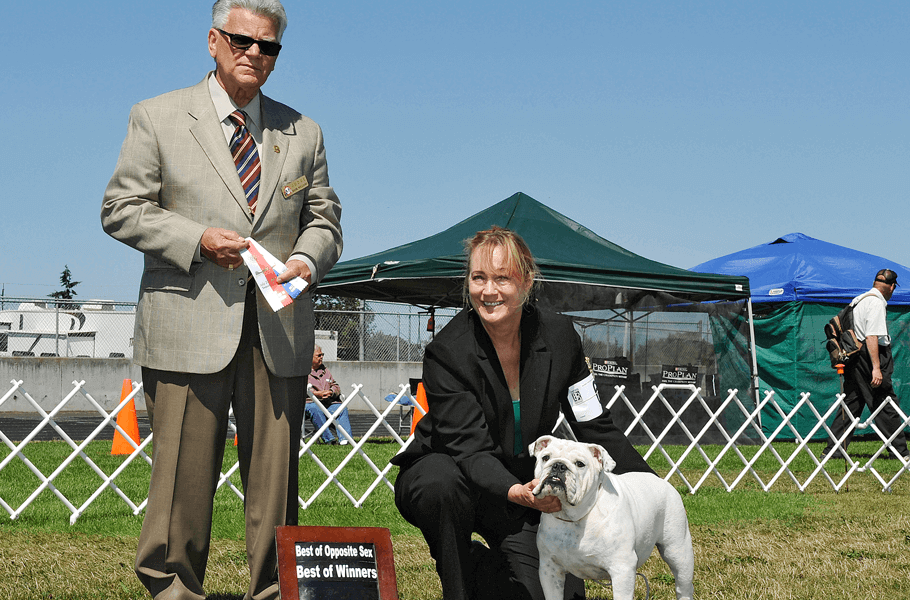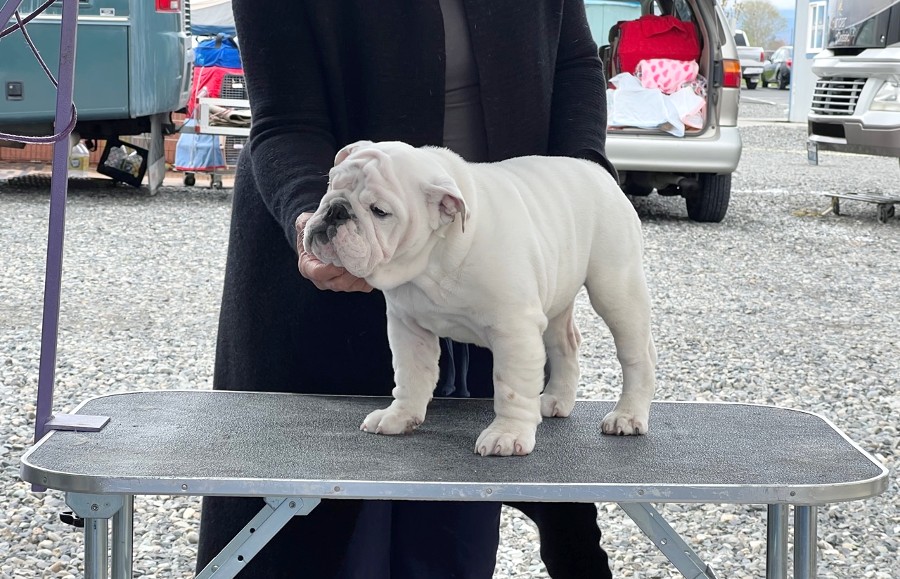Dog Show Terminology: 20 Terms You Should Know Before Entering a Dog Show
Dog Show Terminology: 20 Terms You Should Know Before Entering a Dog Show
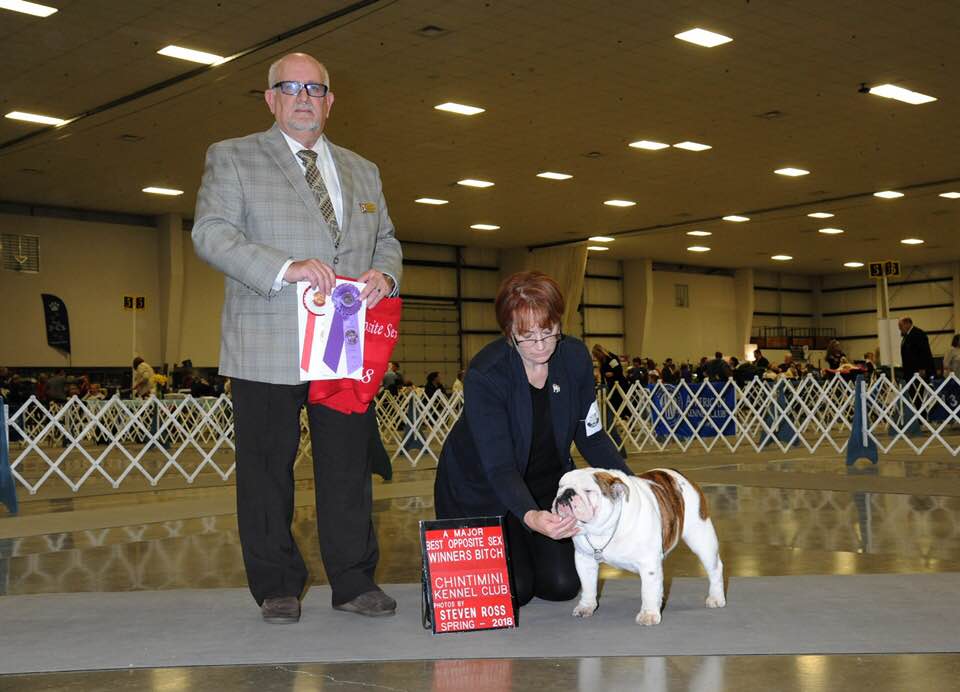
Before you enter your dog into his or her first dog show, it’s important to familiarize yourself with some of the terminology you’ll encounter in the ring. Having a good grasp of common dog show vocabulary will not only help you navigate through each stage of the competition process, but it will also help you determine if you and your dog are ready to enter at all. You may find after reading this article, for example, that your dog doesn’t meet breed standard or he hasn’t yet learned how to stack.
Even if you aren’t planning on entering your dog in a dog show any time soon, mastering the proper terminology can make watching a dog show more enjoyable—whether it’s on TV at the ring.
Below are 20 of the most important and common dog show words and phrases.
Dog Show Terminology Basics:
1. Dam—The mother of a puppy litter.
2. Dog—In dog shows, “dog” refers to an intact male canine.
3. Bitch—This isn’t a dirty word. In dog shows, “bitch” refers to an intact female canine.
4. Breed standard—A written definition of the ideal physical and temperamental features of a breed. The traits outlined in a breed standard are what judges refer to when evaluating dogs in a dog show. Each breed has its own standard that is created by a national organization, like the American Kennel Club (AKC), for example, or the CKC (Canadian Kennel Club).
5. Purebred—A dog whose sire and dam were in the same breed and who have supporting documentation that proves an unmixed lineage.
6. AKC—Established in the late 1800s, the American Kennel Club is an organization that regulates dog shows, provides a registry of purebred dogs and educates the public on the breeding standards of purebred dogs.
7. Groups—Dog breeds are categorized into “groups.” The AKC recognizes seven different groups, which are as follows: Sporting, Hound, Working, Terrier, Toy, Herding and Non-sporting. You can read more about how each group is categorized on the AKC website. Bulldogs, for example, are categorized in the non-sporting group.
The People:
8. Handler—Oftentimes paid professionals, a handler is the person who leads and shows the dog in the ring. A handler plays a pivotal role in a dog show and can often spell the difference between a dog winning or losing at title.
9. Breeder—The dam’s owner at the time she was bred.
10. Breeder-Owner-Handler—Like the name suggests, this is the name for a dog handler who is also the dog’s owner and breeder.
11. Exhibitor—A person whose dog is competing in a dog show.
12. Judge—Someone officially approved by the AKC to judge dog shows.
The Details:
13. Conformation—A dog’s bone structure and physical characteristics.
14. Gait—A dog’s movement. Judges look at a dog’s gait (the way they run and move around the ring) to determine if the dog’s conformation meets the breed’s standard.
15. Stack—The dog’s standing position. One of the ways judges evaluate a dog’s conformation is to examine the dog while he is “stacking.” With a few breed exceptions, stacking requires a dog to situate his paws so that his forelegs and withers (shoulders) are aligned and his hind legs stand at a 90-degree angle with the floor.
16. Pedigree—The written documentation of a dog’s lineage, dating back three or more generations.
17. Catalogue—The document provided by show organizers that details the name and number of each competing dog as well as information regarding the dog’s breeder, handler and bloodline.
Placements:
The following are several titles your dog will be competing for when you enter him or her into a dog show. This is not an exhaustive list, however. For the full list, visit the AKC website.
18. Best of Breed—This title is given to the dog who wins first place for his breed.
19. Best In Group—After a dog wins Best of Breed, he continues on to compete with the other breeds in his group (i.e, “Hunting,” “Sporting,” “Toy,” etc.). If he wins Best In Group, he is considered the best representative of his breed compared with the other dogs in the same group.
20. Best In Show—A dog can compete for Best in Show after he has won Best in Group. Best in Show is the most prestigious title a dog can win in a single dog show.
About Cascade Bulldogs: Cascade Bulldogs is a website dedicated to informing bulldog owners on how to raise, train and show bulldogs (also commonly referred to as “English bulldogs”). Follow Cascade Bulldogs on Facebook and Instagram for weekly updates, cute photos and inspirational bulldog quotes.
Related Posts:





